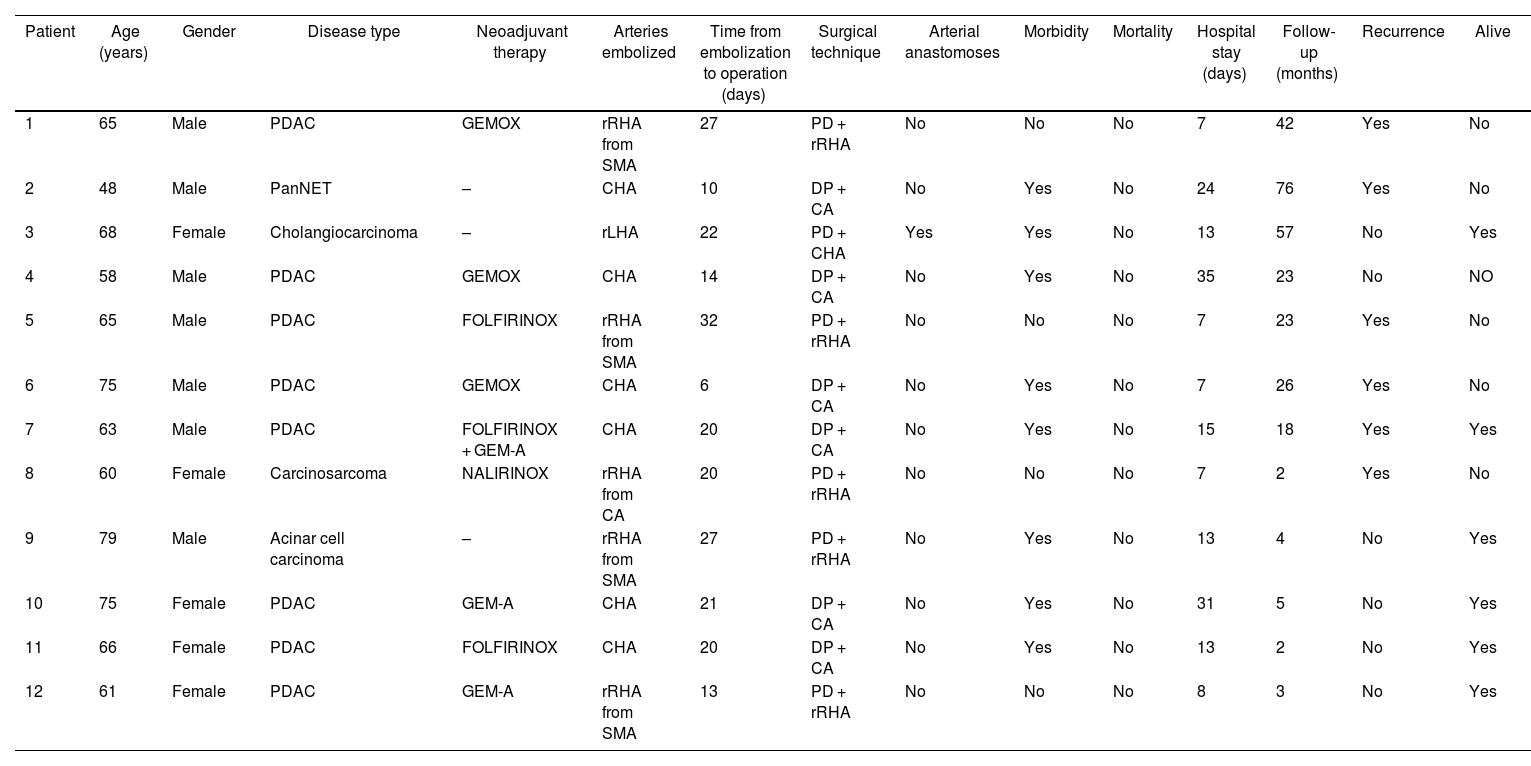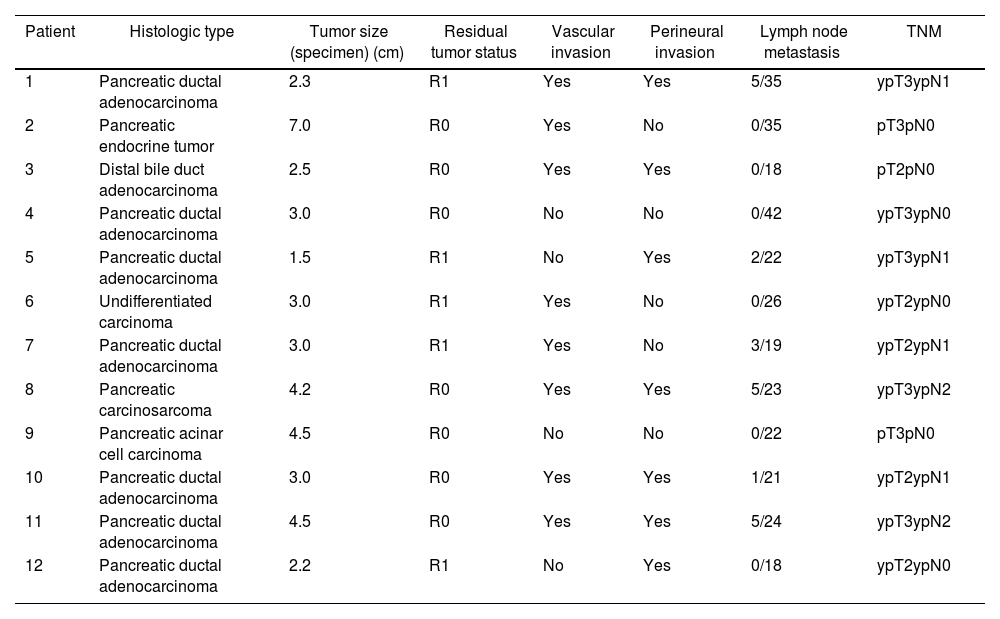Embolization could increase the resectability of pancreatic tumors by supercharging visceral arterial perfusion prior to pancreatic surgery with arterial en-bloc resection. Its indications, however, are controversial.
MethodsWe retrospectively analyzed the results of a single-center database of patients undergoing pancreatic surgery with arterial resection (AR) after preoperative arterial embolization (PAE) to increase hepatic vascular flow and spare arterial reconstruction.
ResultsPAE was planned in 15 patients with arterial involvement due to pancreatic tumors. Three patients were excluded due to the finding of irresectable disease during surgery. Twelve cases were resected because of pancreatic cancer (10), distal cholangiocarcinoma (1), and pancreatic neuroendocrine tumor (1). Arterial involvement in these cases required embolization of the substitute right hepatic artery (RHA) (5), left hepatic artery (1), and common hepatic artery (CHA) (6) to enhance liver vascularization. Two patients presented migration of the vascular plug after PAE. Six pancreatoduodenectomies and 6 distal pancreatectomies were performed, the latter associated with en-bloc celiac trunk and CHA resection. R0 was achieved in 7 out of 12 patients, and pathological vascular involvement was confirmed in 8. Postoperative complications included one patient who developed gastric ischemia and underwent gastrectomy, and one patient who underwent reoperation for acute cholecystitis with liver abscesses.
ConclusionPreoperative arterial embolization before pancreatic surgery with hepatic arterial resection enables surgeons to precondition hepatic vascularization and prevent hepatic ischemia. In addition, this avoids having to perform arterial anastomosis in the presence of pancreatic suture.
La embolización preoperatoria podría aumentar la resecabilidad de los tumores pancreáticos al sobrecargar la perfusión arterial visceral antes de la cirugía pancreática con resección arterial en bloque. Sus indicaciones, sin embargo, son controvertidas.
MétodosAnalizamos retrospectivamente los resultados en nuestro centro de la cirugía pancreática con resección arterial (RA) después de embolización arterial preoperatoria (EAP) para aumentar el flujo vascular hepático y preservar la reconstrucción arterial.
ResultadosSe planificó EAP en 15 pacientes con afectación arterial por tumores pancreáticos. Se excluyeron tres pacientes por hallazgo de enfermedad irresecable durante la cirugía. Se llevaron a cabo doce casos debido a cáncer de páncreas (10p), colangiocarcinoma distal (1p) y tumor neuroendocrino de páncreas (1p). La afectación arterial en estos casos requirió la embolización de la arteria hepática derecha sustituta (RHA, 5p), la arteria hepática izquierda (1p) y la arteria hepática común (CHA, 6p) para mejorar la vascularización del hígado. Dos pacientes presentaron migración del plug tras EAP. Las operaciones realizadas fueron seis pancreatoduodenectomías cefálicas y seis pancreatectomías distales, estas últimas asociadas a resección en bloque del tronco celíaco y CHA. R0 se logró en 7/12p. Se confirmó afectación vascular patológica en 8p. Como complicaciones postoperatorias, 1p desarrolló isquemia gástrica y se le realizó gastrectomía, y 1p fue reintervenido por colecistitis aguda con abscesos hepáticos.
ConclusiónLa embolización arterial previa a la cirugía pancreática con resección de la arteria hepática permite preacondicionar la vascularización hepática y prevenir la isquemia hepática, evitando realizar anastomosis arteriales en presencia de sutura pancreática.
Artículo
Comprando el artículo el PDF del mismo podrá ser descargado
Precio 19,34 €
Comprar ahora














